Abstract
A pH 4.0 buffered solution of the fluorochrome acridine orange was used to stain samples of 2,704 blood cultures that failed to yield visible evidence of growth after 1 day of incubation. Results obtained by the staining method were compared with those obtained by aerobic and anaerobic subcultures simultaneously performed upon the same cultures. Of the 109 culture-positive blood specimens initially detected by the acridine orange and the subculture methods, 85 (78%) were detected by both acridine orange and subcultures techniques, 14 (12.8%) were detected by subculture alone, and 10 (9.2%) were detected by acridine orange alone. The differences between the subculture and acridine orange methods were not found to be statistically significant (P less than 0.1). The acridine orange method represents a rapid and inexpensive alternative to conventional subculture techniques for the detection of bacteria in blood cultures that fail to yield visible evidence of growth after 1 day of incubation.
Full text
PDF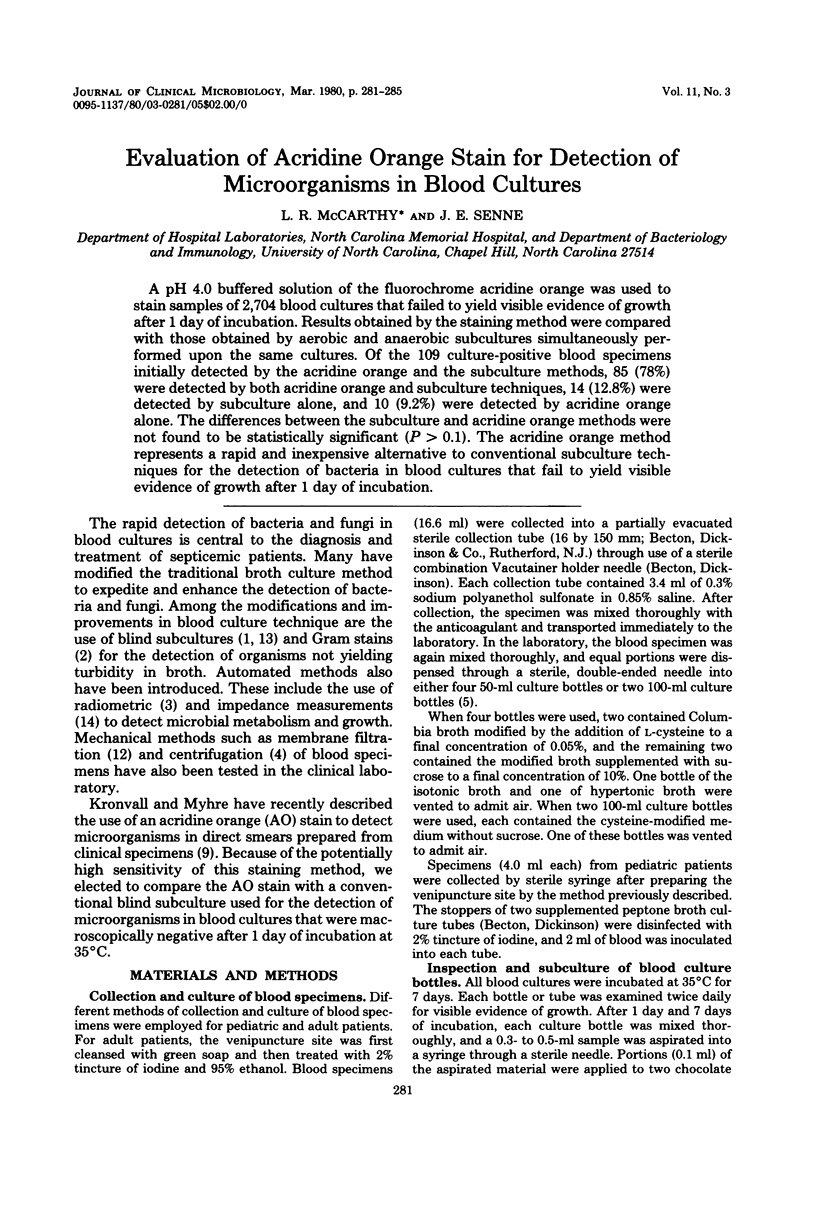
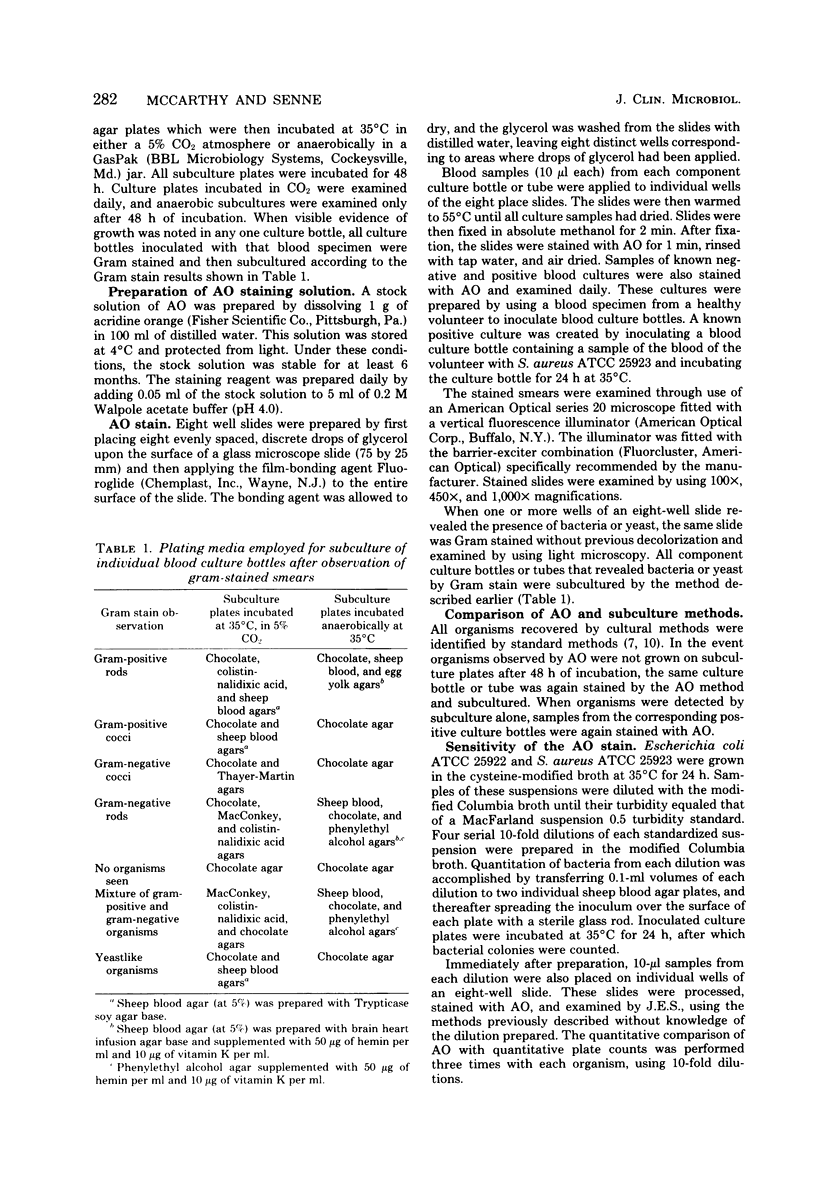
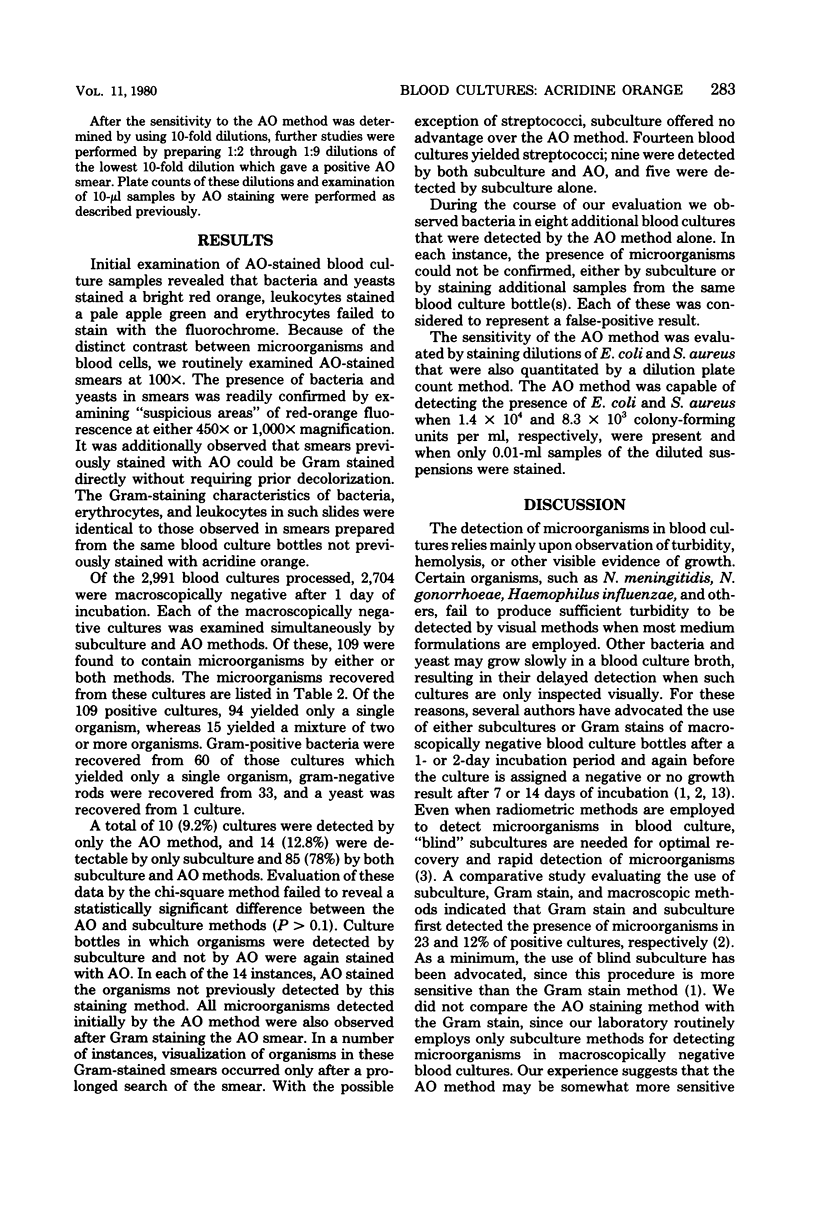
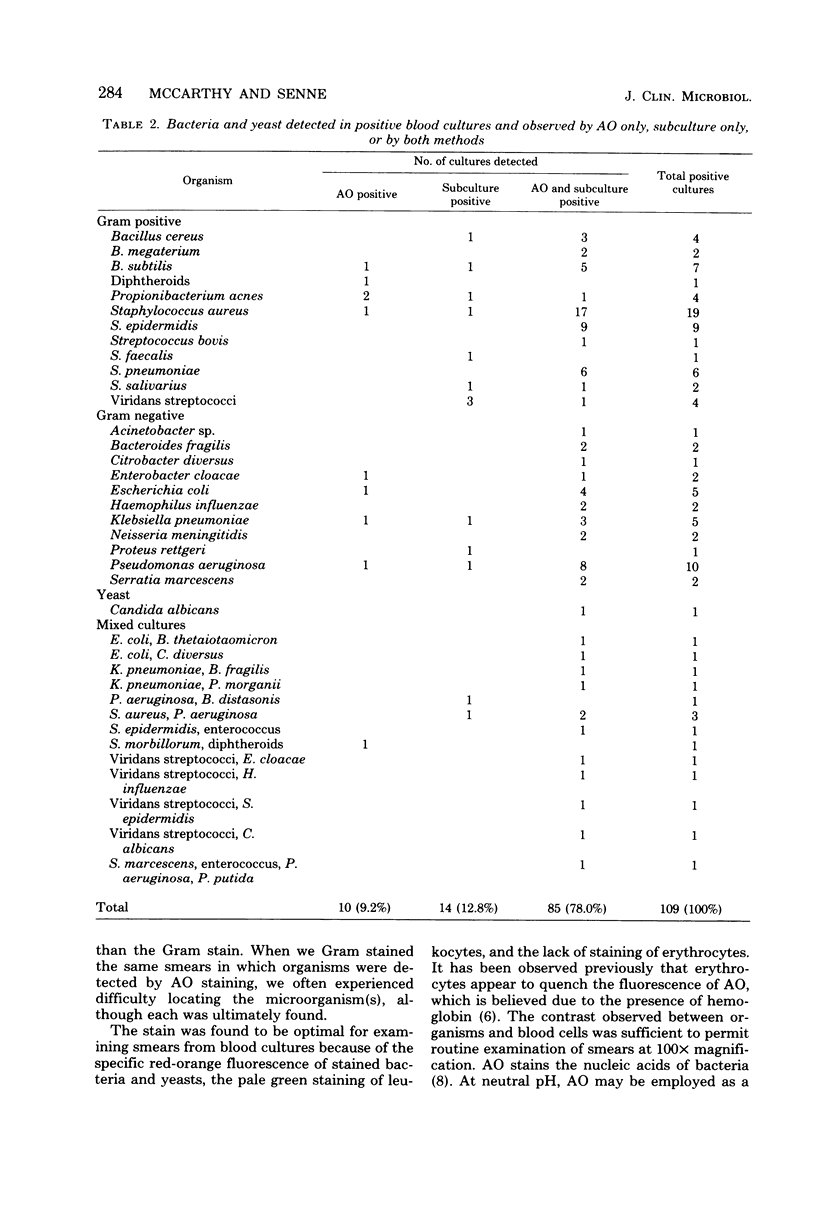
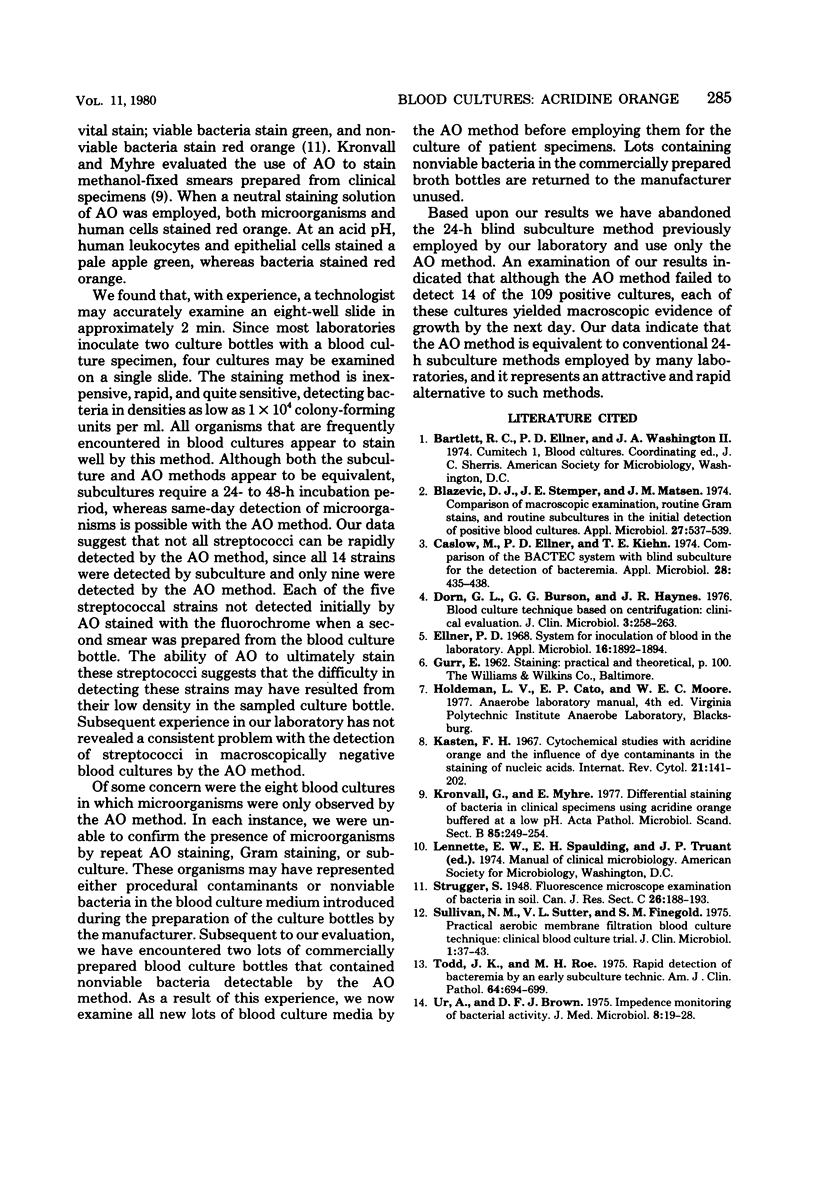
Selected References
These references are in PubMed. This may not be the complete list of references from this article.
- Blazevic D. J., Stemper J. E., Matsen J. M. Comparison of macroscopic examination, routine gram stains, and routine subcultures in the initial detection of positive blood cultures. Appl Microbiol. 1974 Mar;27(3):537–539. doi: 10.1128/am.27.3.537-539.1974. [DOI] [PMC free article] [PubMed] [Google Scholar]
- Caslow M., Ellner P. D., Kiehn T. E. Comparison of the BACTEC system with blind subculture for the detection of bacteremia. Appl Microbiol. 1974 Sep;28(3):435–438. doi: 10.1128/am.28.3.435-438.1974. [DOI] [PMC free article] [PubMed] [Google Scholar]
- Dorn G. L., Burson G. G., Haynes J. R. Blood culture technique based on centrifugation: clinical evaluation. J Clin Microbiol. 1976 Mar;3(3):258–263. doi: 10.1128/jcm.3.3.258-263.1976. [DOI] [PMC free article] [PubMed] [Google Scholar]
- Ellner P. D. System for inoculation of blood in the laboratory. Appl Microbiol. 1968 Dec;16(12):1892–1894. doi: 10.1128/am.16.12.1892-1894.1968. [DOI] [PMC free article] [PubMed] [Google Scholar]
- Kasten F. H. Cytochemical studies with acridine orange and the influence of dye contaminants in the staining of nucleic acids. Int Rev Cytol. 1967;21:141–202. doi: 10.1016/s0074-7696(08)60814-1. [DOI] [PubMed] [Google Scholar]
- Kronvall G., Myhre E. Differential staining of bacteria in clinical specimens using acridine orange buffered at low pH. Acta Pathol Microbiol Scand B. 1977 Aug;85(4):249–254. doi: 10.1111/j.1699-0463.1977.tb01970.x. [DOI] [PubMed] [Google Scholar]
- Sullivan N. M., Sutter V. L., Finegold S. M. Practical aerobic membrane filtration blood culture technique: clinical blood culture trial. J Clin Microbiol. 1975 Jan;1(1):37–43. doi: 10.1128/jcm.1.1.37-43.1975. [DOI] [PMC free article] [PubMed] [Google Scholar]
- Todd J. K., Roe M. H. Rapid detection of bacteremia by an early subculture technic. Am J Clin Pathol. 1975 Nov;64(5):694–699. doi: 10.1093/ajcp/64.5.694. [DOI] [PubMed] [Google Scholar]
- Ur A., Brown D. F. Impedance monitoring of bacterial activity. J Med Microbiol. 1975 Feb;8(1):19–28. doi: 10.1099/00222615-8-1-19. [DOI] [PubMed] [Google Scholar]


